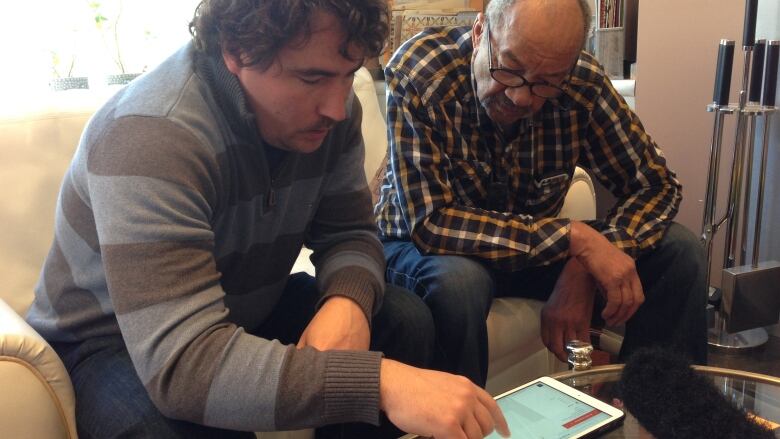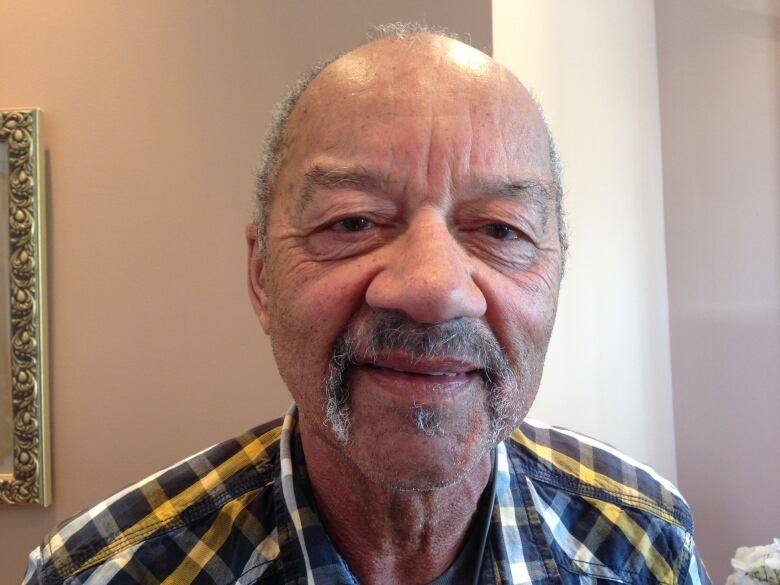Online map sheds light on money spent to expropriate Africville land
Architectural historian read Halifax's 1960s council minutes to find expropriation payments

A former resident of Africville is hoping a new online map, which documents how much residents were paid when Halifax took the land in the 1960s, will help bolster his case for compensation for those who lost their homes.
Nelson Carvery is the proposed lead plaintiff in a lawsuit initially launched in 1996, which aims to pay individuals who lived in the black community along the Bedford Basinfor their losses.
Lawyers presented Carvery's case atNova Scotia's Supreme Court in November, but it hasn't yet been certified as a class action lawsuit.
Amateur architectural historianPeter Ziobrowski, who founded the Action Group for Better Architecture in Nova Scotia, met with Carvery on Feb. 22to show him an interactive map he designed thatshows how much Africville residents were paid when the city expropriatedtheir land.
A decade's worth of council minutes
Ziobrowski said he spent "hours and hours" reading through all of the Halifax city council minutes from the 1960sand writing down any reference to expropriation in Africville.
In particular, he tried to note the name of the landowner, the property, and the amount they were paid in exchange for their land. He then incorporated that information into an interactive online map.
Some properties couldn't be found in the minutes or were mentioned without specifying the payment amount, so the map is incomplete.
Carvery said projects like this one are important, because they bring public attention to the need foradditional compensation for former residents.
'We got nothing'
He said the apology and accompanying settlement agreement between Halifax Regional Municipality and the Africville Genealogy Society in 2010did not go far enough.
"We got nothing. Nothing that we can put our finger on,"Carvery said. "Apology,that's all we got. Can't take that to the bank."
Carvery, who left Africville at the age of 18, said his grandfather, William Carvery, owned 21 properties on approximately three or four hectares of land.
"It was a beautiful place to grow up,"he said. "We had a very sizable property with a big barn. We had horses, we had cattle, we had chickens and geese and pigs."
$500 plus expenses

Ziobrowski estimated William Carvery was paid $30,000 by the city during expropriation, but cautioned that amount might reflect the payment for only a portion of Carvery's properties.
In most cases where Africville residents had clear title, Ziobrowski said, they appear to have been paid "full value" for what they owned.
That wasn't the case for those who did not have clear title to their land. In those cases, he said, they typically received $500 plus expenses.
Expropriation common
Ziobrowski said he built the map in the hopes of making expropriation "visible in a way that perhaps hasn't been done before."
Expropriation was common in the 1960s as a means of urban renewal, he said.
Halifax councillors handed out expropriation notices "the way they now hand out paving contracts,"Ziobrowski said.












_(720p).jpg)


 OFFICIAL HD MUSIC VIDEO.jpg)
.jpg)



























































































